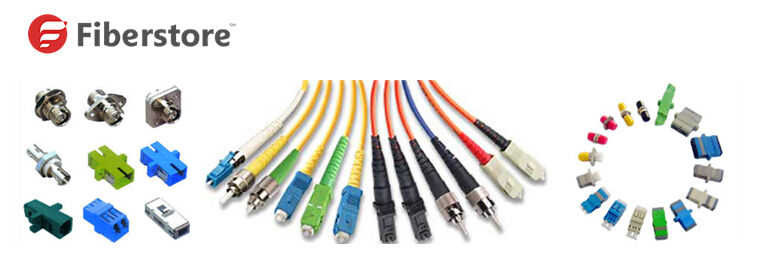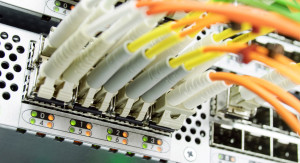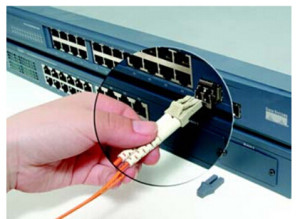The LC connector footprint is approximately half the size of an SC connector. The LC has a back shell designed to accommodate standard 1.6mm or 2.0mm diameter cable designs. The standard construction of the LC fiber connector consists of a spring loaded, 1.25mm diameter zirconia ceramic ferrule housed in a thermoplastic connector back shell.

The latch configuration depicted (Figure 1) is a front pivot design. The drawback with this design, especially in simplex (buffered) cross connect applications, is that the latch is open on the back and can easily snag on rack components, other connectors or conduit. In duplex applications it is less of a problem because the design of most duplexing clips incorporates a feature that allows the connector set to become “snagless”. Unfortunately, some of these designs necessitate the installation of the duplexing clip during the connector installation process. Installers performing behind the wall or behind the rack applications sometimes pull multiple channel pre-terminated cables through conduit and perform the duplexing at the outlet or rack port. The design of the “Rear Pivot Latch” LC Connector (Figure 2) is intrinsically snagless in simplex form (no clip is required to render the connector snagless) and minimizes risk in both applications mentioned above. The increased finger landing area on the rear pivot latch connector (Figure 2) also provides ergonomic latch access in high-density applications.
Another area of design differentiation among LC connectors is the protective cap included with the connector. Some LC designs include a cap that fits snuggly to the outside diameter of the ceramic ferrule nose of the connector (Figure 3). If an LC connector utilizing this type of cap is subject to a sudden impacting load to the front area of the connector that houses the ferrule, the possibility of breakage exists. The Rear Pivot Latch LC connector includes an innovative protective dust cap. The cap installs on the connector with an audible "click", and it does not directly bear on the sensitive ferrule end face (Figure 4).

In duplexing connectors together, a feature that enhances the ease of installation and minimizes TCO is a duplex clip that has the ability to be installed after connector termination. This type of clip snaps into place (Figure 5), providing the correct center-to-center spacing for the duplex application and the required A-B polarization markings. Some LC duplex designs require that these clips be mounted onto the connector pair in the course of fiber termination. If polarity changes are required, connectors must be re-terminated. Still, other LC duplex designs require tools to install or remove the clip. The design shown in Figure 5, requires no tools and can be easily installed and removed to facilitate connector changes.
The “Rear Pivot Latch” LC Connector design (Figure 6) incorporates design features that satisfy all of the design concerns mentioned earlier.
The snagless rear pivot latch assures easy installation by reducing the chance that the connector body will become snagged. The large, ergonomically shaped finger land area on the latch provides efficient moves, adds and changes. The duplexing clip can be installed after termination to assure rapid polarity changes. The unique protective dust cap with audible “click” serves to reduce the chance that the ceramic ferrule broken (during install or adds/changes). All of these things directly impact the TCO of the interconnect solution.
Fiberstore listened to our customers, and responded by delivering the next generation fiber optic LC Connector Solution for private and public networks. The LC Connector Solution was developed in response to customer needs for smaller and easier to use fiber optic connectivity. It simplifies moves, adds, and changes and saves you money. The LC Connector uses an improved version of the familiar, user friendly telephone plug, which provides a reassuring, audible click when engaged. The unique combination of small size and the click of connectivity makes the LC Connector the right choice for your network.
Key Features
- Low insertion loss
- Corrosion resistant body
- Precision mechanical dimension
- Meets Telecordia-GR-326-CORE
Fiberstore as the main professional fiber optic products manufacturer in china offer a various kinds of fiber cable connectors, FC Connectors, LC Connectors, SC Connectors, MPO Connectors and ST Connectors. You can buy fiber optic connection products on our store with your confidence. All of fiber optics supplies with high quality but low price.



